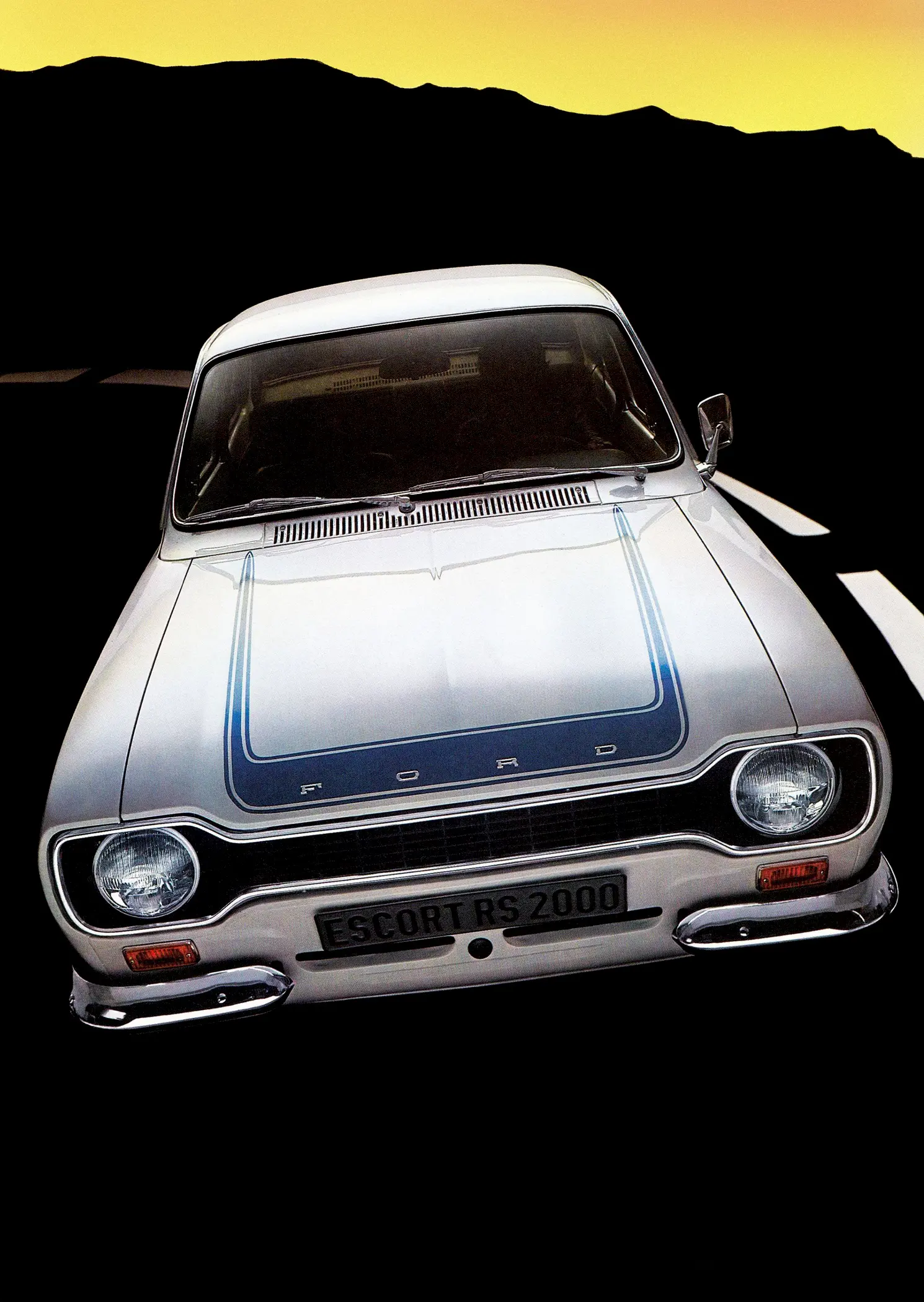THE MAGNIFICENT SEVEN SPORTING FORD ESCORTS
13 September 2023
From a time when no edition of ITV’s World of Sport would have been complete without the sound of an Escort in full cry:
1968 - GT
Ford never offered a factory-built ‘performance’ version of the Anglia 105E, so the Escort GT intrigued motorists with dreams of becoming the next Graham Hill. The shield badges on the wings denoted a 1.3-litre engine with the Cortina GT’s cylinder head, a special inlet manifold, a high-lift camshaft, and a dual-choke Weber carburettor. The proud owner could also enjoy twin exhaust pipes, radial ply tyres, and full instrumentation for their £765. Car believed the Escort GT “could even hit Cortina GT sales”.
1968 - Twin Cam
Ford’s Motorsport division created the Twin Cam as a homologation special for World Championship rallies. The company only finalised the decision for it to enter production at Halewood as late as December 1967. £1,123 3s 4d gained the owner a 116 mph top speed, and the Cortina Lotus’s transmission and dual Overhead Camshaft (DOHC) 1,558cc engine with twin Weber 40 DCOE (Doppio Corpo Orizzontale E; ‘Double-Body Horizontal E’) carburettors and an eight-valve head. The specification also included modified suspension, servo-assisted brakes, and wider rims. The Twin Cam was apparently known at Ford as “The Blimey Car”; in 1967, the Motorsport engineer Bill Meade observed of an Escort prototype “Blimey, one of those things would go like hell with a Twin Cam in it!”. Roger Clark won the 1968 Circuit of Ireland Rally in a Twin Cam, while Motor thought it “the nearest thing to a racing saloon ever offered to the public”.
1970 - RS1600
The RS1600 was a variation of the Twin Cam formula, powered by Ford’s 1.6-litre power plant, re-engineered by Cosworth, and fitted with a 16-valve twin overhead camshaft head, resulting in a 114 mph top speed. The price was £1,447 - £60 more than the Twin Cam. Ford built the early models at Halewood, but by the end of 1970, the assembly moved to their Advanced Vehicle Operations at Aveley. The first car left the AVO works on 14 November, and Motor Sport believed the RS1600’s “impressive and usable acceleration and crude but tenacious road-clinging are its best qualities”.
1970 - Mexico
Ford’s tribute to Hannu Mikkola, and Gunnar Palm’s victory in the 1970 London to Mexico World Cup Rally debuted in November of that year. For £1,150 4s, you too could own “The road version of the rally winner” while boasting to your neighbours that it hailed from the AVO works. As Motor Sport put it in 1971, “as a purchaser of an Escort RS 1600 or Mexico you can rest assured that your high-performance car has not been thrown together amidst a line of ‘ordinary’ cars”. The Mexico was a combination of the Twin Cam’s ‘Type 49’ heavy-duty bodyshell with the 1.6-litre Kent crossflow Cortina GT engine and lowered suspension. “It deserves to success, as it undoubtedly will”, mused Autocar. Meanwhile, the sales copy boasted, “So, if you regret missing out on the world’s toughest rally, cheer up. At least you can now own the car that won it!”.
1971 – Sport
Aka, the 1300 GT with a more spartan cabin - rubber floor mats and less elaborate seating. £940 was a reasonable sum for an Escort capable of 99 mph and with a “sports safety steering wheel”. “High performance with an unusually low price”, claimed Ford, and the Sport appealed to motorists with Jason King aspirations but an East Cheam income.
1973 - RS2000
In June 1973, the RS2000 became the final production car from AVO. Car thought it “probably the best Escort model yet”. Ford intended their latest sporting Escort as “the sort of car a doctor, dentist or newspaper executive might buy”. The RS2000 featured the 2-Litre OHC Pinto engine, the Cortina 2000’s gearbox, some exciting stripes, and a top speed of 111 mph for £1,586. Sales were via specialist Ford Rallye Sport dealerships. Autocar found the RS2000 easier to drive than the RS1600 and “a superb road car” – what owner could ask for more.

1973 - 1300E
Or “A head turner on the road and in the showroom!” according to Patrick Allen in this splendid Ford PR film.
The 1300E was the Escort for the junior executive (medallion optional) whose corporate status merited a £1,182 company car with halogen auxiliary lamps and a vinyl roof. It also came with the 1,298cc engine, a choice of tasteful Amber Gold, Venetian Gold, or Metallic Purple paint finishes, an “elegant walnut fascia”, reversing lights, cut pile carpets, fabric upholstery, a heated rear window and a cigar lighter for your Panatella. “A well-researched and thought-out dress-up and tune-up job on the two-door Escort” was Car’s opinion.
